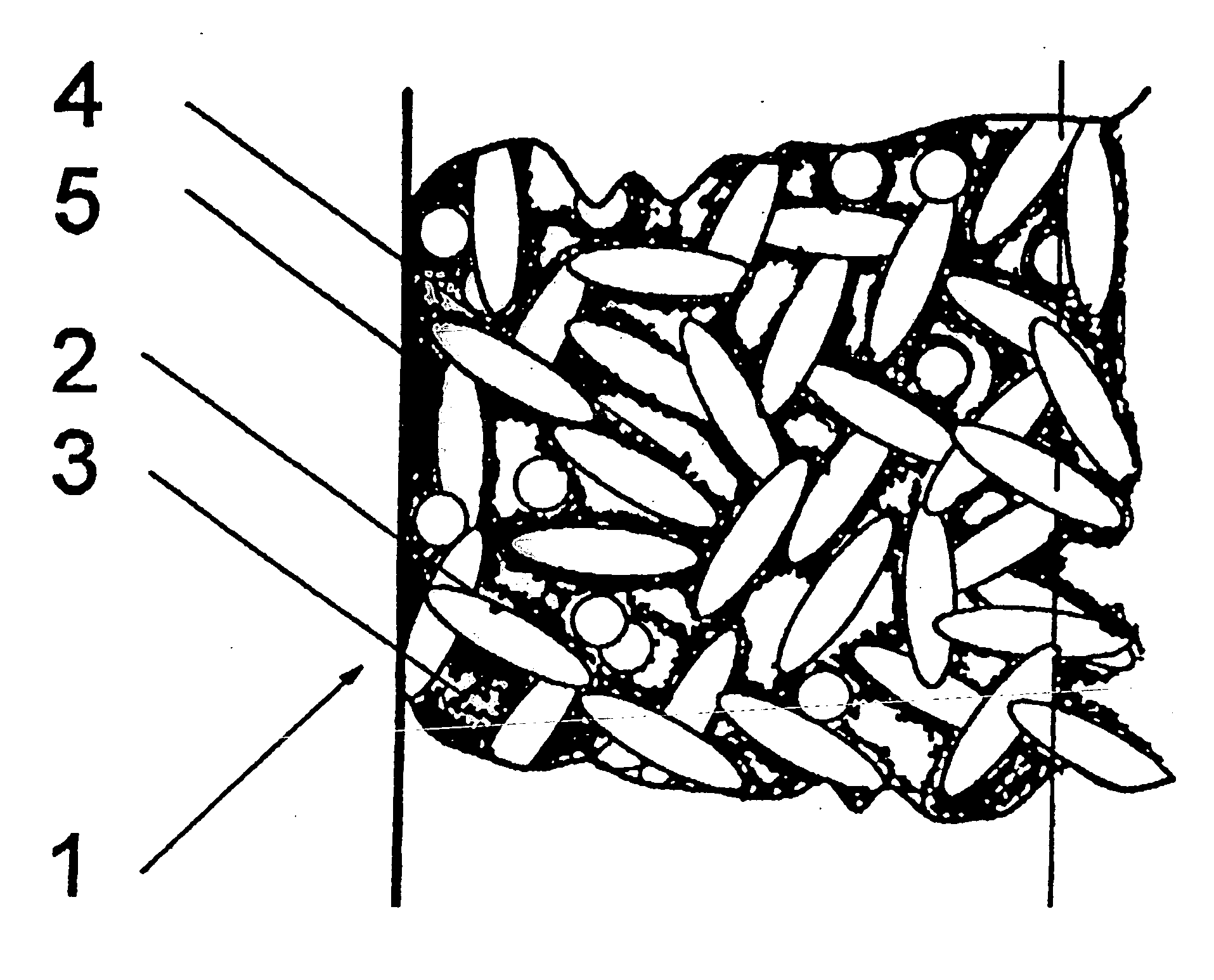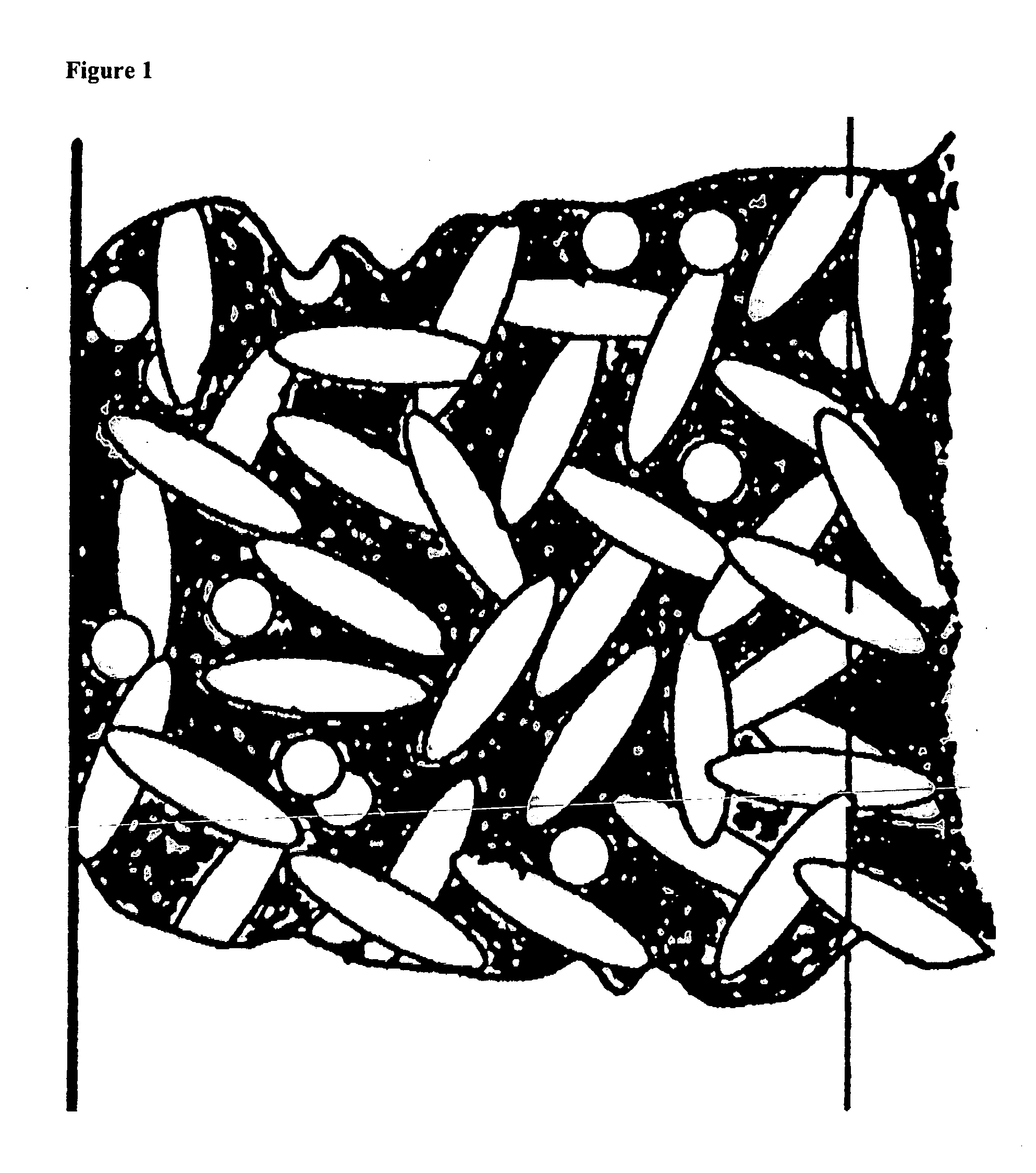Shaped Bodies Made of Powders or Granulated Metal, Method for the Production Thereof and Their Use
a technology of shaped bodies and powders, which is applied in the direction of filtration separation, special packaging, lighting and heating apparatus, etc., can solve the problems of reducing the efficiency of powders or granules, and only allowing limited flow-speed of vaporous materials, etc., to achieve favourable effects on heat storage, improve heat conduction, and reduce the proportion of materials in shaped bodies during production
- Summary
- Abstract
- Description
- Claims
- Application Information
AI Technical Summary
Benefits of technology
Problems solved by technology
Method used
Image
Examples
example 1
[0044] Table 1 shows some determined values for the description of the quality of modified sorbents, for example, that of steam loading of the sorbent material, of integral molar heat of adsorption and storage densities compared with those locally available / traditional sorbents. According to the table, it is clear that these values exceed those of non-modified sorbents by about 130 to 200%.
TABLE 1Characteristic features of modified zeolite sorbents in accordance with thestate of the artIntegralheat ofAdsorptionType ofName ofLoadingadsorptiondensityzeolitezeoliteProducer[kg / kg][kJ / mol][kW / kg]NaCaABaylithBayer AG0.26676.80.261KE 154LeverkusenNaXZeosorb13 XChemie AG0.23148.40.199NaABitterfeldWolfenNaCaAS 114 Pmodified0.29173.40.342NaXPS 1070.35272.30.386NaXPS 102 F0.31674.00.352NaAS 1660.29471.00.310
[0045]
TABLE 2characteristic features of non-modified and modified sorbent supportIntegral heat ofadsorptionStorage densitySupportLoading[kJ / mol][kg / kg]Al2O3No adsorption——Modified Al2O30....
example 2
[0046] Analogous to Table 1, different sorbent supports are compared with each other in Table 2. The highest heat storage density is attained by means of some supports. For modified silica gel and modified aerosol this has been achieved through impregnation with hydrated solutions of hydrophilic salts. The values are at least 10 times adjusted in contrast to the corresponding non-modified ones. Even a non-modified aluminium oxide that is usually non-adsorbing becomes steam sorbent in a modified form.
example 3
[0047] Characteristic features of active components of sorbent shaped body of different composition of the zeolite unit cells of group NaA, NaMgA and MgA are shown in Table 3. Steam loading of the sorbent is adjusted for the case of complete exchange of the sodium cations through magnesium cations, which lie above the ultimate attainable values for non-modified zeolite. With the increment of steam sorption capacity, the heat storage density increases proportionally.
TABLE 3Characteristic features of modified active components of sorbent shapedbodiesLevel of ion exchangeLoading[%][kg / kg]Unit cell00.282Na12[(AlO2)12(SiO2)12]200.325Na9,6Mg1,2[(AlO2)12(SiO2)12]450.340Na6,6Mg3,2[(AlO2)12(SiO2)12]650.373Na4,2Mg3,9[(AlO2)12(SiO2)12]700.379Na3,6Mg4,3[(AlO2)12(SiO2)12]1000.419Mg6[(AlO2)12(SiO2)12]
PUM
| Property | Measurement | Unit |
|---|---|---|
| pore radius | aaaaa | aaaaa |
| temperature | aaaaa | aaaaa |
| temperature | aaaaa | aaaaa |
Abstract
Description
Claims
Application Information
 Login to View More
Login to View More - R&D
- Intellectual Property
- Life Sciences
- Materials
- Tech Scout
- Unparalleled Data Quality
- Higher Quality Content
- 60% Fewer Hallucinations
Browse by: Latest US Patents, China's latest patents, Technical Efficacy Thesaurus, Application Domain, Technology Topic, Popular Technical Reports.
© 2025 PatSnap. All rights reserved.Legal|Privacy policy|Modern Slavery Act Transparency Statement|Sitemap|About US| Contact US: help@patsnap.com



